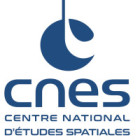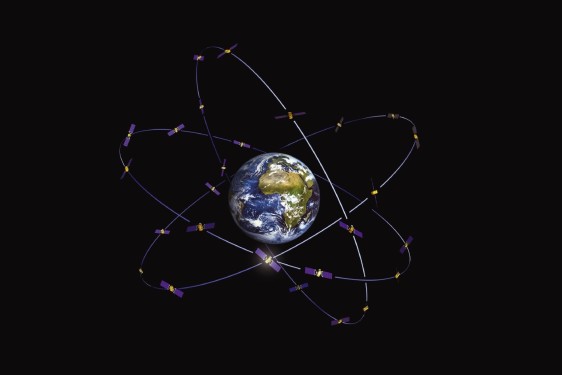Mission
There is a new emerging trend on the application of reflectometry in combination with GNSS signals to create a Passive Radar. A passive GNSS radar is defined as a surveillance system created from a GNSS receiver by capturing/processing the GNSS signals scattered by the target-to-identify. The growing interest of passive radar lies on its passive property: no specific signal is transmitted but rather existing positioning signals, in this case GNSS signals, are used. Passive radars can be very relevant on several applications: for undetected survey around a receiver (in space or not), for UAV/plane monitoring in airport/city, for space debris monitoring without perturbing other space missions, and for monitoring boats not equipped with an AIS system (small boat) and for prohibited fishing detection.
The lack of emitted signal presents some advantages and challenges. The main advantages are a reduction of the system cost due to the lack of transmitter and to not create additional radio frequency interferences to other systems (especially near an airport). The challenges are a low received signal power, the differentiation between GNSS Line-of-Sight (LOS) signals, the target scattered signals and multipath generated by other non-desired sources (buildings, etc.).
The goal of this study is thus to develop passive radar techniques based on the processing of GNSS signals (MEO/LEO) for detecting/localizing targets close to a (reference) receiver. For a given receiver design and a given target (boat, plane, etc.), the detection/localization performance will be evaluated from simulations and real measurements using CNES and TAS-F equipment. Moreover, the proposed technique performance will be compared to SAR (Synthetic-Aperture Radar) image techniques performance.
The GNSS passive radar has been demonstrated for UAV or boat detection in [1][2]. However, these techniques are based on a simple receiver with one antenna and the use of only one satellite signal. In this PhD, the main idea is to improve them by:
1) Using current, or future, GNSS signals (MEO and LEO-PNT satellites) available in all GNSS frequency bands: improvement of the measurements’ information diversity.
2) Using advanced array antennas to obtain Polarization Diversity (PD) and Angle of Arrival (AoA) information since they allow to differentiate between LOS and target’s reflected signal; PD due to the reflected signal’s change of polarization and AoA due to signal’s elevation angle (high vs low).
3) Using state-of-the-art propagation models to facilitate the signal processing, and to help in the separation/identification between the reflection from a target and from the local environment such as ground reflection (sea, floor, etc.), close hill, etc.
Advanced synchronization techniques must also be used to acquire/track the targets’ reflected signals since they can have very low power (one of the main challenges). Long-coherent integration time techniques will thus be used. One advanced synchronization technique, expected to work very well in this application, is “vector tracking”: it allows the synchronization process to directly benefit in a jointly centralized filter from the improvements 1), 2) and 3) since it is a tracking solution where the local replica generation is driven directly from the position estimated by the navigation solution Kalman filter. Therefore, the addition of extra information (PD, AoA, channel) and of several GNSS signals measurements can be exploited and centralized in the filter. Additionally, vector tracking has shown to work well with low C/N0 and the Kalman filter could be modified to consider the receiver’s motion or to predict the target movement’s trajectory to increase the coherent integration time.
The PhD focus is centered around the synchronization algorithms of the target reflected signals and in the position estimation (if vector tracking includes the target position estimation). AoA estimation through antenna array will also be explored. The exploitation of the polarization diversity and propagation channel will remain at state-of-the-art level.
This PhD will be based on a strong TAS-F heritage: AoA, TOA and FOA measurements based on CRPA technics under real time implementation constraint, Specific CRPA based on post-correlation signal developed in CNES R&T, Internal development on SAR images based on delay / Doppler map, Long time integration technics, while vector tracking for signal tracking at very low C/N0 (lunar tracking), etc.
Moreover, this PhD will benefit of TAS-F reflectometry road map: a work-study on the propagation issue and link budget, and a possible CNES R&T, dedicated to the hardware design of ground station and a first level of GNSS-SAR images.
[1] F. Pieralice et al., GNSS-Based Passive Radar for Maritime Surveillance: Long Integration Time MTI Technique
[2] A. Di Simone et al., GNSS-R: A Useful tool for sea target detection in near real-time
=================
For more Information about the topics and the co-financial partner (found by the lab !);
contact Directeur de thèse - axgarcia@recherche.enac.fr
Then, prepare a resume, a recent transcript and a reference letter from your M2 supervisor/ engineering school director and you will be ready to apply online before March 14th, 2025 Midnight Paris time !
Profile
Laboratoire
Message from PhD team
More details on CNES website : https://cnes.fr/fr/theses-post-doctorats

